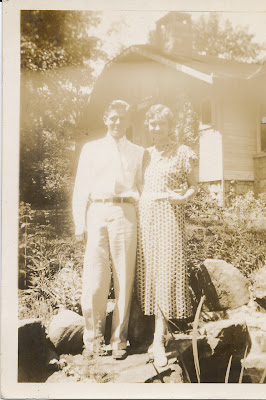Oh how I wish I had asked more questions when she was living with us. What stories she could have told. That is, if she was willing. I am not sure. I cannot remember asking any questions, but they never did any storytelling on their own. My mom and she just did not share stories about their past. I think Grandma only lived with us for a couple years when I was little, but I do certainly remember her and then my Aunt Jean living with us. Grandma Lucinda then moved to Philadelphia to live with my Aunt Mill.
In looking at any one's Indian ancestry, rolls and Indian census are certainly a part of their lives. When you step into Lucinda's life, you begin the roll search. Listed on the Ancestry.com Native American Rolls there are 16 which are listed as potentials for the Cherokee Nation of the 5 Civilized Tribes
The Rolls for Cherokee are:
Reservation Roll - 1817 History - Cherokee Indians A listing of those applying for a 640 acre tract in the East in lieu of removing to Arkansas. This was only good during their lifetime and then the property reverted back to the state. This is only an index of applicants, the people listed here did not in most instances receive the reservation they requested
Emigration Roll 1817~1835 History Cherokee Indians Those who filed to emigrate to Arkansas country, and after treaties in 1828 on to Oklahoma. These Cherokee became known as the Old Settlers after the Eastern Cherokee joined them in 1839
Churchill Roll ~ 1908
History
Cherokee Indians
By Inspector Frank C. Churchill to certify members of the Eastern Band of Cherokee Indians. Like the Hester roll it includes a lot of information including degree of blood
Henderson Roll -1835 History - Cherokee Indians A Census of over 16,000 Cherokee residing in Alabama, Georgia, Tennessee and North Carolina to be removed to Oklahoma under the terms of the treaty of New Echota in 1835. See Trail of Tears Roll below.
Trail of Tears Roll ~ 1835 History Cherokee Indians This is actually a report from the Secretary of War, in compliance with resolutions of the Senate, statements showing the persons employed, the funds furnished, and the improvements valued under the Cherokee Treaty of December 1835.
Mullay Roll ~ 1848 History Cherokee Indians A census of 1,517 Cherokee remaining in North Carolina after the removal of 1838. John C. Mullay took the census pursuant to an act of congress in 1848.
Chapman Roll ~ 1851 History Cherokee Indians Prepared by Albert Chapman as a listing of those Cherokee actually receiving payment based on the Siler Census.
Old Settlers Roll ~ 1851 History Cherokee Indians A listing of Cherokee, still living in 1851, who were already residing in Oklahoma when the main body of the Cherokee arrived in the winter of 1839, as a result of the Treaty of New Echota. Approximately one third of the Cherokee people at that time were Old Settlers and two thirds were new arrivals.
Siler Roll ~ 1852 Cherokee Indians A listing of those Eastern Cherokee entitled to a per capita payment pursuant to an act of Congress in 1850.
An Act of Congress Roll of July 31, 1854 (10 Stat 333) Authorized the addition of 88 individuals whose names were omitted by Siler but who were included on the Roll prepared by Mullay.
Drennen Roll ~ 1852 History Cherokee Indians The first census of the new arrivals of 1839. The New Echota Treaty group. The Drennen roll is a per-capita payment made to Cherokees living in the west who removed as a result and after the Treaty of 1835 Article 9. The roll was prepared by John Drennen and contains the payee's name, Cherokee district and then family group.
Swetland Roll ~ 1869 History Cherokee Indians Prepared by S. H. Swetland as a listing of those Eastern Cherokee, and their descendants, who were listed as remaining in North Carolina by Mullay in 1848. Made pursuant to an act of Congress (1868) for a removal payment authorization.
Hester Roll Index ~ 1883 History Cherokee Indians Compiled by Joseph G. Hester as a roll of Eastern Band of Cherokee Indians in 1883. This Roll itself provides the Chapman roll number and English and Indian name
Dawes Roll Index to the Final Rolls of Citizens and Freedmen of the Five Civilized Tribes in Indian Territory (Dawes) 1889-1914
Guion Miller Roll ~ 1909 History Cherokee Indians Compiled by Mr. Miller of all Eastern Cherokee, not old Settlers, residing either east or west of the Mississippi. Ordered by the Court of Claims as a result of a law suit won by the Eastern Cherokee for violations of certain treaties.
Baker Roll ~ 1924 History Cherokee Indians This was supposed to be the final roll of the Eastern Band of Cherokee Indians. The land was to be allotted and all were to become regular citizens of the United States. Fortunately the Eastern Band of Cherokee avoided the termination procedures, unlike their brothers of the western nation. The Baker Roll "Revised" is the current membership roll of the Eastern Band of Cherokee Indians of North Carolina.


































